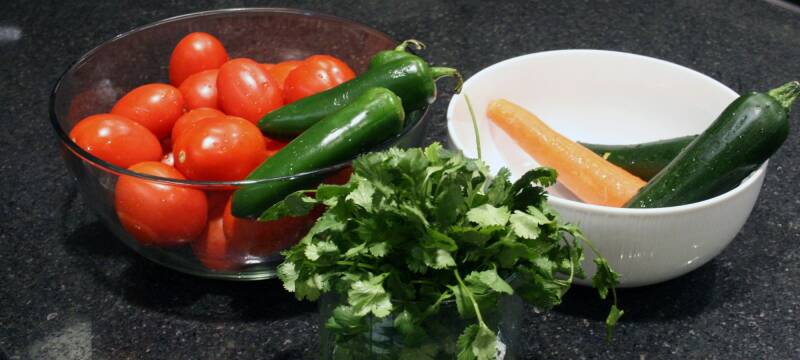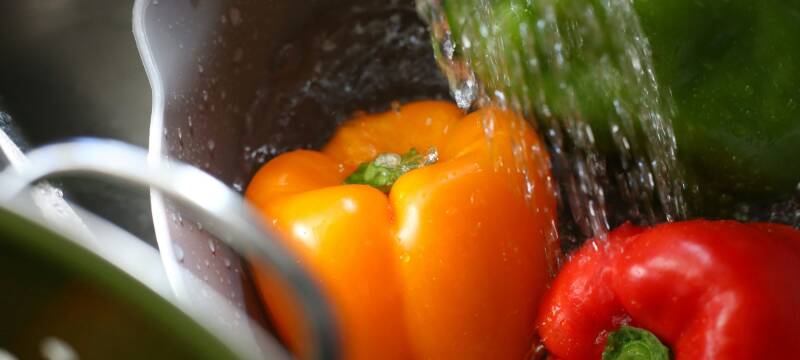
As folks who grow and pick food, we want to see food eaten, not tossed. And we know you do, too! You’ve probably experienced it before: fill up your basket with vibrant veggies and the best intentions only to find your fresh produce, wilted, moldy and rotting.
We get it. Life’s busy and produce can be a little high-maintenance. But there’s good news: learning how to keep vegetables fresh longer is possible. It just takes a few smart habits, a little planning, and a couple of towels.
Here are a few of our best storage tips for fresh vegetables.

Know Your Veggies’ Preferences
Not all vegetables are built the same. Some love the cold. Some absolutely hate it. Some like humidity. Others want to stay bone dry.
Before you even start washing or chilling, it’s important to understand your harvest.
Fridge Lovers
These guys need the chill to stay fresh:
- Leafy greens (spinach, lettuce, kale)
- Carrots, radishes, and beets
- Broccoli and cauliflower
- Green beans
- Zucchini
Countertop Champs
These ones don’t belong in the fridge:
- Tomatoes
- Potatoes
- Onions and garlic
- Winter squash
- Basil

Veggie Storage Tips and Styles
You don’t need fancy containers or special bins. You just need a system. Here are our favorite vegetable storage tips that work every single time.
For Leafy Greens: The Towel Trick
- Don’t wash right away. Moisture speeds up rot.
- Wrap unwashed greens loosely in a clean kitchen towel.
- Place inside an open plastic bag or reusable produce bag.
- Store in your fridge’s crisper drawer.
They’ll stay crisp and vibrant for up to two weeks. That’s longer than most store-bought stuff lasts!
For Root Veggies: Let Them Breathe
- Remove leafy tops (they steal moisture from the roots).
- Store in a mesh bag or open container in the fridge.
- Don’t seal them in plastic—they’ll sweat and spoil.
Carrots, beets, and radishes love this setup. It’s the best way to store vegetables that grow underground.
For Tomatoes: Hands Off the Fridge
- Keep them on the counter, stem-side down.
- Store out of direct sunlight.
- Never refrigerate unless they’re very ripe and you need to buy a day or two.
Cold ruins their flavor and texture.
Timing Is Everything
Use what spoils fastest first. It sounds obvious, but when your fridge is full of produce, it’s easy to forget.
Our Quick-Freshness List (Use First → Last)
- Lettuce, herbs, berries
- Broccoli, zucchini, green beans
- Tomatoes, peppers, cucumbers
- Carrots, beets, potatoes
- Onions, garlic, squash
Stick this on your fridge door if you’re a visual thinker.

Only Wash What You Need
Washing everything right away seems like a good idea—but it usually shortens shelf life. Instead, keep veggies dry and dirty (yep), and wash just before using.
Bonus: A little garden dirt acts like a moisture barrier for some root veggies.
From the U Pick Garden to Your Table
If you’ve visited us at Back to the Garden Jax, you know we grow everything with love (and a little bit of compost). Whether you’ve harvested your own or snagged a pre-packed bag from the grocery store, we know you don’t want it going to waste.
By making a few small tweaks, like using a towel or knowing which veggies play well together in the fridge, you can extend the life of your food, reduce waste, and save money.
Let’s Keep It Fresh
Learning how to keep vegetables fresh longer is like learning how to garden: it’s part science, part trial, and a whole lot of observation. What works best for your setup might take some experimenting. But the tips we shared here are a great place to start.
Start simple. Don’t overthink it. And remember: the goal is to eat the veggies, not stress over them.
If you picked more than you can eat this week, share some with a neighbor. Or freeze what you can’t use. It’s all part of the rhythm of growing, eating, and sharing.
Got more questions about veggie storage? Stop by the farm or shoot us a message. We love talking shop (and salad). 🥬
Visit Back to the Garden Jax to plan your next harvest day.

